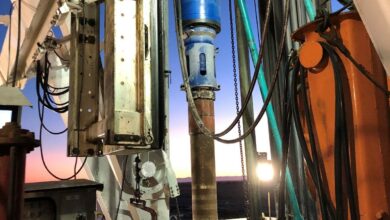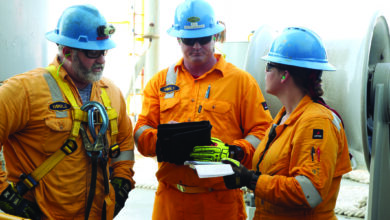Drilling & Completion Tech Digest
Schlumberger, NOV team up on automation technologies
Schlumberger and NOV have agreed to collaborate on the acceleration of automated drilling solutions adoption by operators and drilling contractors. The agreement will enable companies to combine Schlumberger’s surface and downhole drilling automation solutions with NOV’s rig automation platform to improve well construction performance. The integrated offering enables the automation of manual workflows while improving safety, decision making, consistency and efficiency in drilling operations.
The combined solution leverages advanced AI from the Schlumberger DrillOps on-target well delivery solution, while NOV’s NOVOS process-automation platform controls all NOV rig equipment within the operational envelope. The two technologies will work together to manage procedural compliance and reach optimal operational performance.
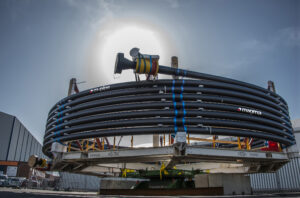
HWCG takes delivery of high-pressure composite riser pipe
Magma Global has delivered the world’s first high-pressure composite riser pipe to HWCG’s storage location on the US Gulf Coast, completing its Offset Flexible Riser system.
The m-pipe is designed for rapid installation and is suitable for responses where vertical access is restricted and an offset is required. This includes shallow-water depths where the presence of combustible and volatile compounds affects personnel safety or where access under a floating production facility is needed. The system may also be used in deeper waters.
Deployed straight from the handling apparatus, the 800-ft-long section of m-pipe will provide a flexible riser connection between the capping stack placed on the incident well and a rigid riser suspended from a MODU. The m-pipe will form a horizontally oriented “S” shape between the capping stack and the rigid pipe riser thus decoupling motion and decreasing surface station-keeping requirements for the temporary production facility.
Once in operation, hydrocarbons released from the well would flow through the complete riser flow path and be processed onboard the temporary production facility to be collected in shuttle tankers for transportation. Once installed, the m-pipe is qualified to operate for at least six months.
HWCG specified a pipe that would be compliant with movement and resistant to degradation from continuous exposure to hydrocarbons at pressures up to 10,000 psi and temperatures up to 250°F, and would also offer an alternative to conventional non-bonded flexible pipe. HWCG is one of two deepwater emergency response consortiums established for the US Gulf of Mexico following the Macondo blowout in 2010.
Click here to view a video of the pipe arriving in Houston.
Baker Hughes delivers data management across Aramco drilling operations
Baker Hughes has deployed its remote operations digital technology across Aramco’s drilling operations, encompassing more than 200 sites. Building upon the operator’s existing data management infrastructure and capabilities, this project provides the company with a single solution that covers data aggregation from the edge; real-time, unified data streaming and visualization; data management; software development services; rig-site digital engineers; and monitoring personnel.
The project supports Aramco’s ongoing efforts to further drive digital opportunities and initiatives and to enhance operating performance and reduce emissions. The WellLink solution allows remote monitoring personnel to receive standardized real-time data, and field-based personnel have access to a unified view of wellsite operations from all providers on location. This enables effective and proactive mitigation of drilling hazards.
Following the contract award to Baker Hughes in 2020, the combined teams worked in close collaboration and deployed the technology 50% faster than planned. Baker Hughes teams conducted more than 400 onshore and offshore trips to install rig-site edge devices and integrate data streaming, monitoring and visualization capabilities into Aramco’s existing digital infrastructure.
Equinor Ventures signs deals with tech startups
As part of the Equinor and Techstars Energy Accelerator, a mentorship-driven program for startups, Equinor Ventures has signed a letter of intent with f3nice, an Italian additive manufacturing company. F3nice’s technology will source metal scrap and disused parts to convert into metal powder, which can be used as input material for printing of new parts. Equinor Ventures also awarded two Accelerator Prizes to Cnergreen and Ocean Access. Cnergreen is commercializing a nanoparticle-based foam technology enabling cleaner hydrocarbon production. Ocean Access is developing a more reliable and cost-effective solution for accessing and gathering information from remote locations offshore.
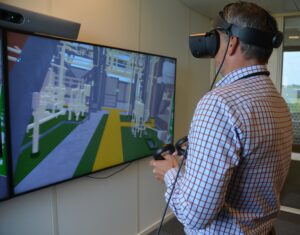
Virtual reality system developed for astronauts piloted on Neptune’s Gjøa platform
Neptune Energy recently completed a virtual reality (VR) pilot on its Gjøa platform in the Norwegian North Sea, enabling teams to make highly realistic virtual visits to the facility. The technology, developed by PaleBlue and used to train astronauts traveling to the International Space Station, will reduce the need for offshore travel, lower costs and associated emissions and support safe operations.
It is the first time PaleBlue’s technology has been applied to an offshore installation. Using a VR headset, offshore workers interact with a 3D model of the Gjøa platform from onshore.
“The new virtual reality solution allows employees and contractors to build up knowledge and awareness of the complex multi-level facility without the need to travel. Planning work operations will be safer and more efficient,” said Martin Borthne, Director of Operations for Neptune Energy in Norway. “We expect this to grow in the years ahead as digitalization further enhances collaboration over distance, bringing immediate access to expertise and enabling preparation of activities to be carried out from onshore.”
As a first step, Neptune Energy will use the technology for familiarization and safety training, but the scope will be expanded to other complex operational activities, such as simulations related to HSE events, or to better understand how platform modifications will appear before they are carried out. In addition, expansion to a multi-user function will enable offshore personnel to meet onshore personnel in the virtual world.
Digitizing operational assets to improve safety, productivity and reduce environmental impacts is a key component of Neptune Energy’s digital strategy. The company has created digital twins of platforms in the Norwegian, UK and Dutch sectors of the North Sea. Similar to the VR pilot on Gjøa, these digital twins also enable offshore site inspections and planning work to be carried out onshore. Neptune Energy also uses laser scan technology to carry out detailed engineering work for subsea production developments, which will be tied back to Gjøa.
Fiber optics leveraged to revive well shut in for 3 years
Software company LYTT recently repurposed existing fiber optic infrastructure to support the remediation of a shut-in well in the North Sea. The well had been shut-in for more than three years as traditional diagnostic approaches failed to identify a solution to a sustained casing pressure issue.
For the asset in question, LYTT was brought in after the operations team was unable to pinpoint the source of a leak in the tubing using a multi-finger caliper tool. Although a wall thickness anomaly was identified and a patch applied, this action failed to fully address the source of the leak, and the pressure issue remained. A further diagnostic attempt using a wireline acoustic sensing tool also failed to find the source.
To fully address the pressure issue and allow the operator to restart production, LYTT used the existing fiber optic cable installed in the well and repurposed it as a distributed acoustic sensing (DAS) array. The company then analyzed the DAS data, alongside time and depth series data, to produce a real-time view that would give the operations team an understanding of flow through the well tubing and into the annulus. This allowed them to isolate leak points and prevent further pressure buildup.
Using the insights generated, the operations team was able to develop a reliable remedial design to address multiple leak points and bring the well back online.
“In order to take chance out of the equation, we analyzed data collected in real time from existing fiber optic infrastructure, applied our proprietary acoustic recognition algorithms and gave the team the visibility and the certainty they needed to solve the pressure issue permanently and bring the well back to life,” said Lilia Noble, Well Integrity Technical Product Owner at LYTT.
Petronas to push digital systems across enterprise
Schlumberger announced an enterprise-scale agreement to deploy advanced digital solutions for PETRONAS, enabled by the DELFI cognitive E&P environment and integrated with the OSDU Data Platform. These digital solutions will enable PETRONAS to accelerate its field development planning and optimize production performance of its assets.
The agreement follows the successful deployment of PETRONAS’ LiveFDP program in Malaysia, which leveraged the DELFI Petrotechnical Suite – Schlumberger’s collection of digital solutions for petrotechnical workflows – and the FDPlan agile field development planning solution. PETRONAS’ teams were able to rapidly generate competitive development scenarios across multiple data and functional domains through that deployment.
2021 OTC Spotlight on New Technology Awards highlight industry innovations
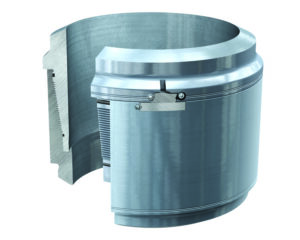
Fourteen technologies from 13 companies were selected to receive the 2021 OTC Spotlight on New Technology Award this year.
The winners were selected based on five criteria: the technology’s novelty in the marketplace, innovativeness, demonstrated success, broad commercial appeal, and ability to make a significant impact across the offshore industry.
Dril-Quip BADGeR connector
This technology from Dril-Quip reduces HSE risks by removing rig personnel from the red zone and lowers operating costs. Part of the e-Series family of products, the connector features an automatic hands-free anti-rotation device that enables remote makeup operations, provides superior fatigue performance and integrates a metal seal to reduce environmental risks
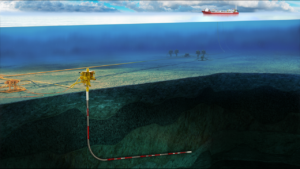
Odassea Subsea Fiber Optic solution
Produced by Halliburton and Technip-FMC, this technology is the industry’s first subsea distributed acoustic sensing solution capable of sensing both upper and lower completions with data quality and fidelity equivalent to existing dry-tree installations but independent of tie-back distance. This enabled both seismic imaging and reservoir diagnostic applications.
DynaTrac real-time wireless depth correlation system
This Halliburton system increases efficiency during operations that require accurate bottomhole assembly depth or position with on-demand positioning throughout operations. It eliminates uncertainty in tool position without the need for wireline or workstring manipulation while tracking movement of the bottomhole assembly.
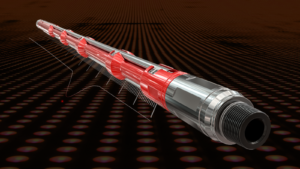
Merlin deepsea mineral riser system
This system, produced by Oil States Industries, is a hands-free riser system with remote monitoring that enables recovery of deepsea minerals used in electric vehicle batteries.
Hydrone-R
This underwater intervention drone, produced by Saipem, is capable of performing both inspection and intervention missions and was conceived to offer life-of-field services, with a focus on guaranteeing safety and productivity of offshore energy fields while minimizing operational costs.
DrillPlan
Schlumberger’s DrillPlan coherent well construction planning solution is a collaborative cloud-based space providing automated end-to-end workflows, instantly validating engineering and delivering smarter designs faster. The discovery and consumption of offset knowledge empowers data-driven insights and accelerates the delivery of an efficient and optimal drilling program that can be automatically generated in a fraction of the time of previous applications.
APM4O&G
Using Siemens Energy’s domain know-how, APM4O&G (Asset Performance Management for Oil & Gas) delivers a diagnostic and decision-support solution for oil and gas equipment. This enables a step-change in how offshore operators manage their assets.
By continuously comparing real-time equipment operational data against models and running automated diagnostics, operators can forecast performance, preempt failures and conduct reliability-centered maintenance.
MyFleetRisk
Siemens Energy’s data-driven, collaborative risk management platform leverages real-world engineering expertise to quantify and visualize risk profiles of gas turbine fleets. Its transparent delivery of risk and criticality information empowers operators with actionable insights, without the need for connectivity.
Subsea 7 NESP – nano engineered sensor platform
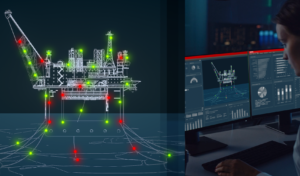
This transformative solution, developed by Subsea 7 in collaboration with its subsidiary Xodus Group, continuously monitors fatigue and corrosion offshore, reducing OPEX. The wireless nanotechnology sensor requires no power supply/batteries, is zero-maintenance, scalable, and can extend life and improve uptime.
In addition to the above, five small-business winners were also selected:
HYTORC J-Washer
This innovative lock washer from HYTORC is used to maintain joint integrity under dynamic conditions, such as thermal cycling, rotating machinery and transportation. It provides all the safety, quality and speed benefits of the standard HYTORC Reaction Washer and offers the ability to lock fasteners tight.
Pipers 2.8
This self-serve, free-floating, micro multi-sensor solution from INGU works in operational conditions, delivering conditional-critical data related to leaks, deposits and wall condition. It improves planning, decision making and operational control, while reducing the risk of failure
LithoFusion azimuthal density and porosity LWD tool
The Logging While Drilling LithoFusion tool from OLIDEN TECHNOLOGY delivers azimuthal density, neutron porosity and borehole images. High vertical resolution logs and imaging provide the best insights for quantitative fluid and mineralogy analysis, geological structures, borehole stability and well placement.
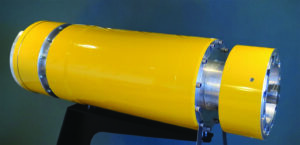
Deposition In-Line Inspection (DILI)
DILI systems from Rocsole use a non-nuclear tomographic technology to inspect pipelines for deposition build-up thickness, type and location. This safe and non-invasive sensor works in various process environments, allowing production to continue without interruption and enabling fast reporting of results with AI/ML-based data processing.
PACT
This technology platform for autonomous, all-electric-based well control from TECHNI is an extremely lightweight, low energy consuming drop-in-replacement actuation system. It comes with a fast failsafe mechanism to ensure safety in all modes of operation. DC

